Syncing in a Cinch with OneDrive
Today we're going to talk about syncing files with OneDrive. What it means, why it’s helpful, and how to do it. Cloud management of files makes access to your content easier than ever, but it can get confusing working between the cloud and saving files locally to your machine.
Let’s cover how to synchronize files in OneDrive and what you need to know once they’re set up.
What Does Syncing Mean?
Clearing the air about how the simplicity of syncing is critical to getting people to buy into this feature.
In ye olden times we turned on our primitive computer towers and opened up the documents folder to load whatever files we were working on. In modern times we’ve transitioned to working together in shared cloud spaces and our local machines have remained relatively unchanged. You can still save files locally or upload them to the cloud, but keeping consistent in your preferred workspace can be a task in itself.
Syncing your files with the cloud means you’re creating a space on your local machine that is connected back to the cloud. This place acts and feels just like another folder on your computer, but it’s always up to date with the edits made to that content; whether you’re doing it from that local space or directly on the cloud files in the browser.
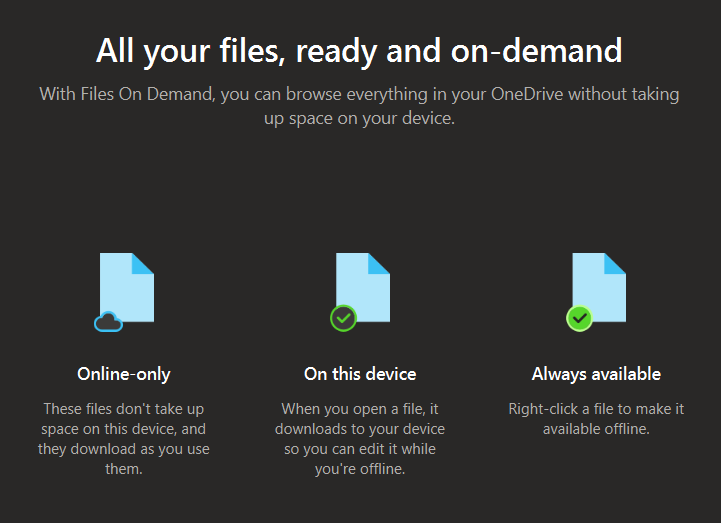
Think of syncing your files by setting up shortcuts or bookmarks for all your stuff rather than duplicating them, and you don’t have to manually refresh or create them one-by-one!
Why Do People Do It?
Among several other benefits, there are two big reasons I hear about using OneDrive syncing:
- The ability to access and work on your files offline (when you aren’t connected to the cloud).
- Being able to access your cloud content from the File Explorer.
When I was in high school, I spent one entire night finalizing a months-long term paper I had written before the file became corrupted at 4AM. Luckily, I had initiated a print job that was saved when I lost connection and I was able to get one single paper copy of my 26 page paper that determine my entire English grade. The prospect of having to type something like that over again, even with the content fresh in mind, still terrifies me.
Times before the cloud were dark indeed, and the reality is we are still at the mercy of our Wi-Fi connection when it comes to working in the cloud. For those that start files locally before uploading to the cloud or have been saving files out of their OneDrive to their computer for those long flights home, synchronization is for you! Users that sync their files can still get to them in airplane mode or while mountain hiking, they can make the changes they need right on their machines and wait until a WIFI connection comes along to push all those updates to the cloud files. This works for updates that your coworkers may make on shared content as well!
If you avoid working in the cloud as much as possible, the File Explorer is likely your best friend for getting around your computer files. You luck out here too, because syncing files from the cloud tucks them all right in a folder alongside your local folders. This makes accessing your cloud network almost indistinguishable from managing content within your hard drive.
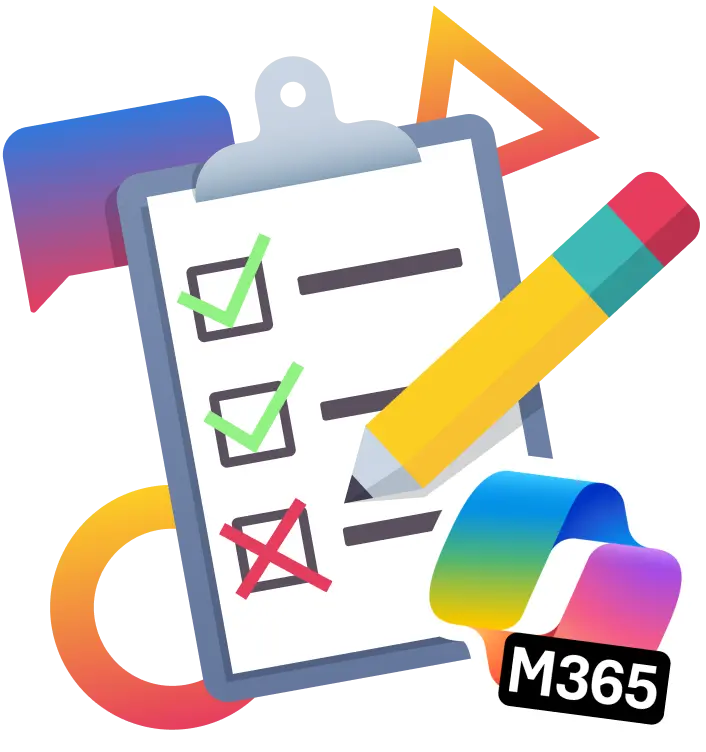
SELF ASSESSMENT
Is your business getting full value from your M365 subscription?
Billions of dollars are wasted each year on underused subscriptions. Take 3 minutes to find out where your tools are driving results, and where they’re holding you back.
Find Out Now

Is Team Communication Holding You Back?
Find Out in Just 2 Minutes.
Take our quick scorecard to uncover communication gaps and hidden barriers within your team.
Syncing your OneDrive
Your OneDrive is probably the cloud space you’re most familiar with, so you may as well start by syncing all your files to your local machine. You’ll get the best proof of concept doing this and be able to troubleshoot any potential issues since it’s a space that your account fully owns.
If you have a Mac or something older than Windows 10 then you’ll need to download the OneDrive App, otherwise:
- Go into M365 in a browser, pick the OneDrive application, select My Files, and click the Sync button in the toolbar at the top.
- A prompt will open asking to open the app via the browser, so check the always allow box and open the app, you might also be asked to sign-in when doing it the first time.
- We recommend using the default location for your OneDrive folder:
C:\Users\[Username]/OneDrive - [Organization]
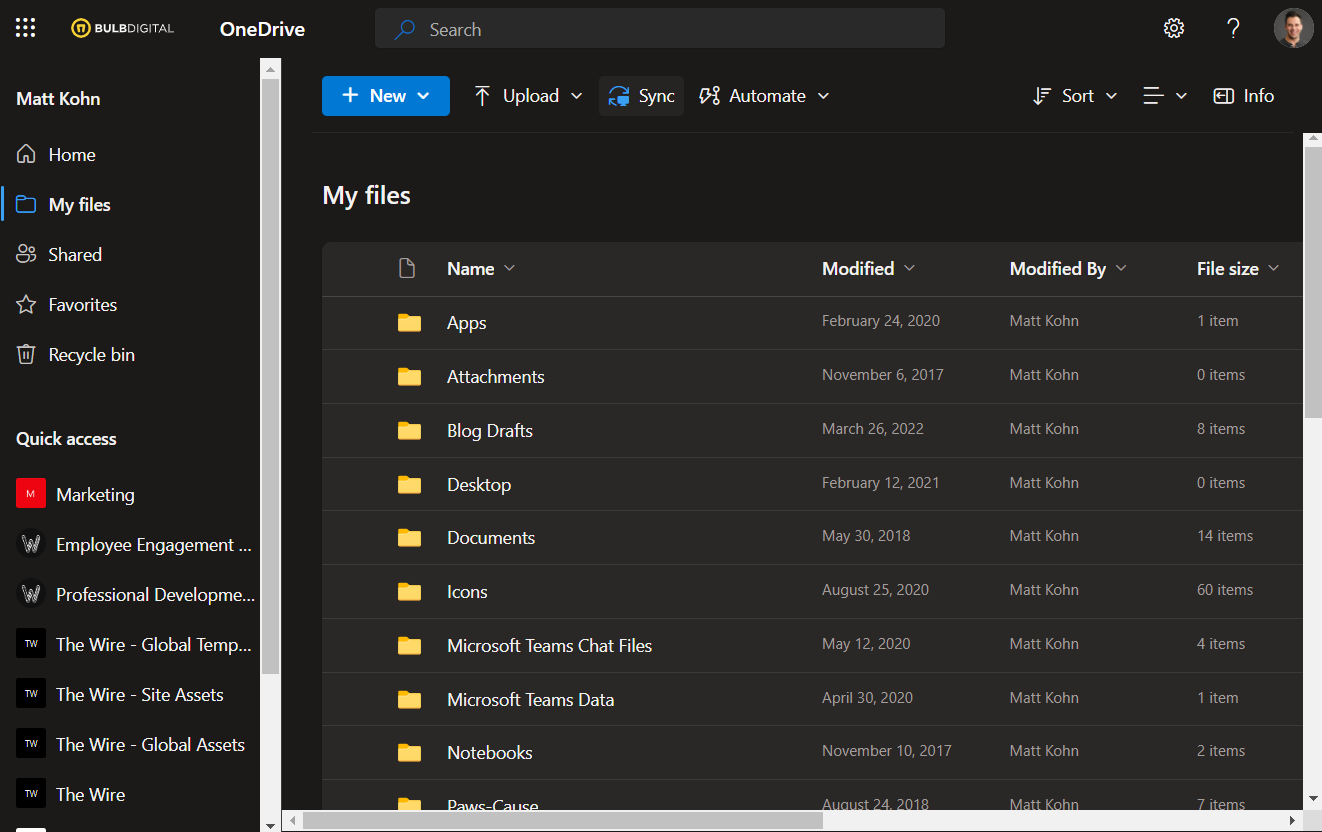
Once the sync is underway, you can watch the progress and see where the content is being populated by clicking the OneDrive icon in the bottom taskbar!
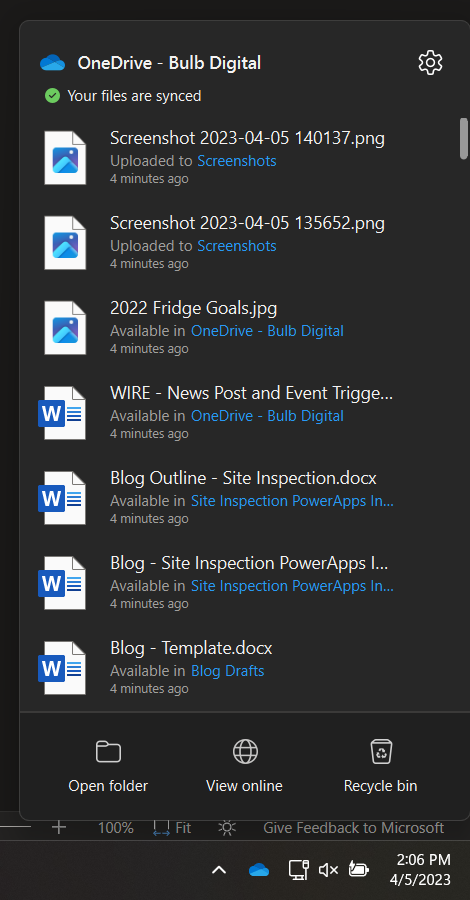
Not only does OneDrive syncing set up a space to access your cloud files directly from your machine, but it will also upload your local computer files up to the cloud as well. This helps mitigate the guessing of where to access previously stored files because you can go to either location to get the latest and greatest. Every file included in the sync will have a status icon indicating the nature of its sync with the cloud. All the icons are covered here, but we covered the main ones:
- Red circle white cross means the file or folder can’t be synced
- Circular arrows mean the sync is in progress
- Grayed out cloud means you aren’t signed in or not setup (paused icon indicates a paused sync)
- Green tick means the file is downloaded and locally available (if it’s filled in then the document is always kept on the device)
- A chain icon is a link to another shared folder

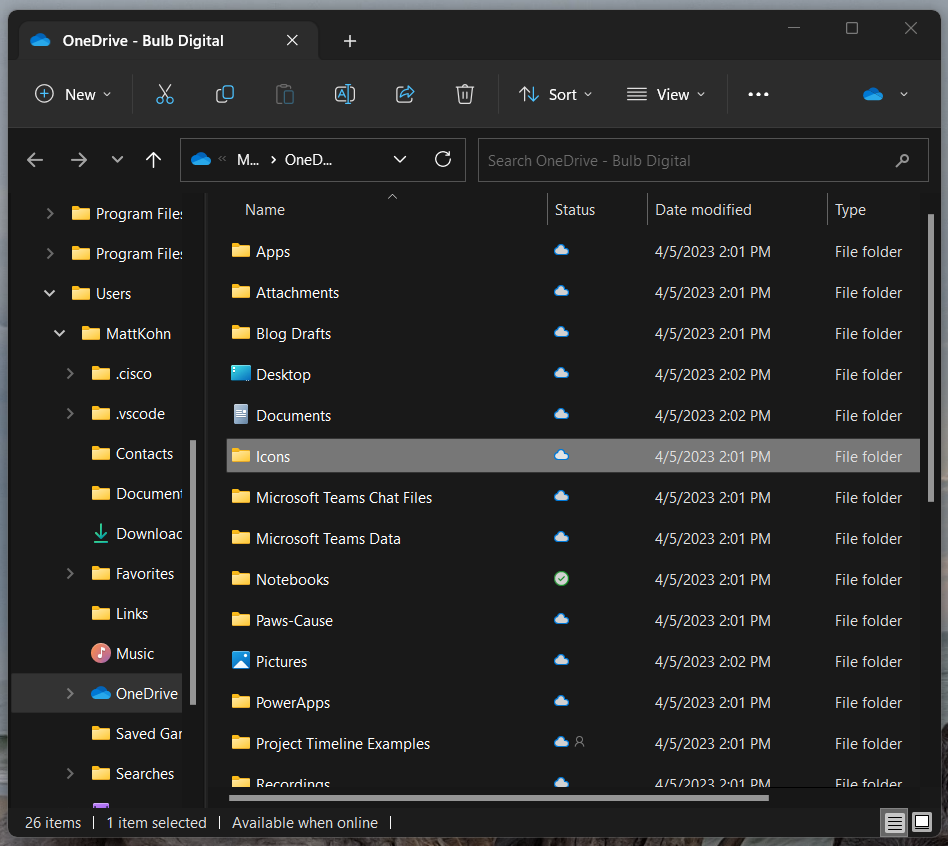
Syncing in SharePoint
For people that use their OneDrive space for all their collaboration work, syncing their OneDrive is a no-brainer, but did you know you can sync other shared spaces in M365? You may work across tons of project sites in SharePoint and want the same setup as your newly synced OneDrive space.
Luckily, the setup for syncing a library in SharePoint is the same as OneDrive. Just navigate to the place in SharePoint and click that sync button in the toolbar.
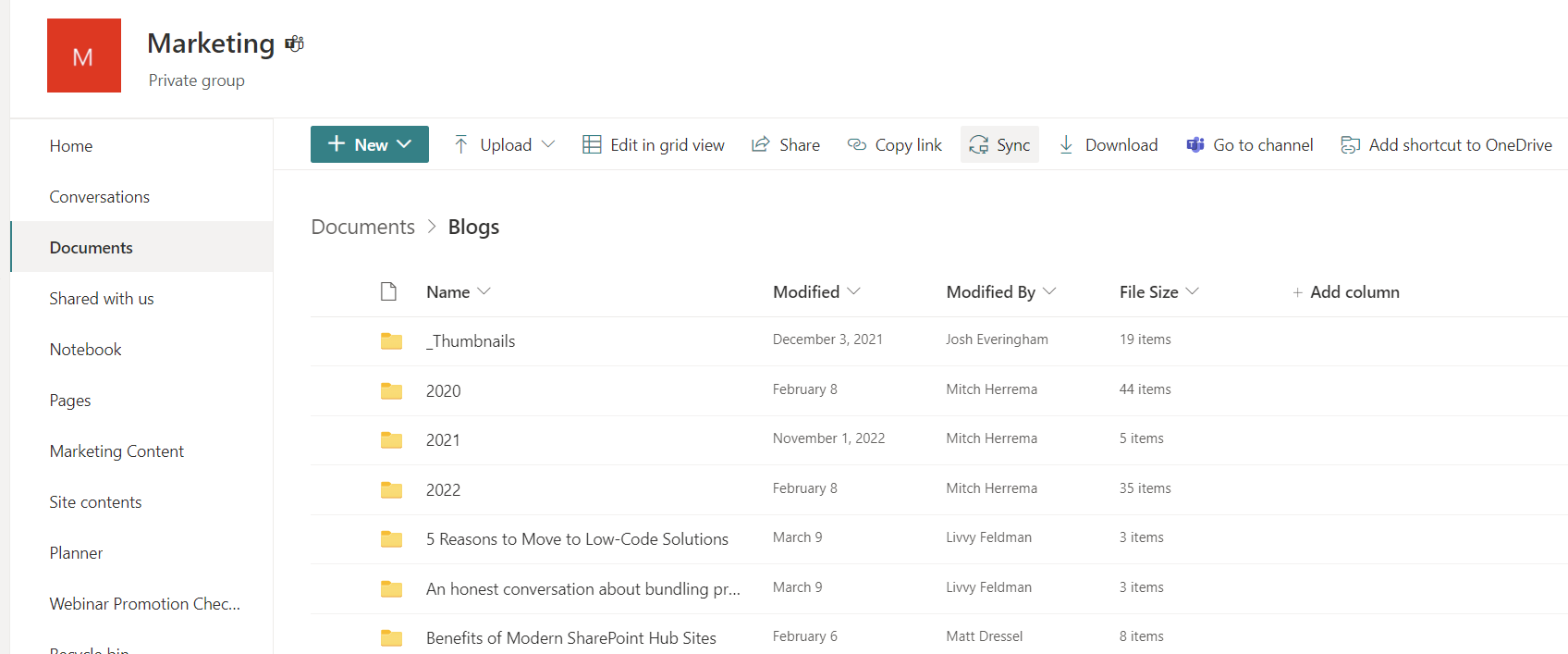
What’s this? You may have noticed another button in that toolbar after sync that says Add Shortcut to OneDrive. If you only care about a specific file or folder, then creating a shortcut to that specific place may suit you better than syncing an entire library.
- Creating a OneDrive shortcut to something puts a link in a OneDrive sync that you have setup already on your machine, so you can get to shared collaborative spaces quickly from the same place you manage your synced documents.
- You can’t create a shortcut to something if it’s already syncing via OneDrive on your machine (and you shouldn’t need to).

Troubleshooting & Additional Settings
Like anything else in the cloud, OneDrive syncing isn’t perfect and can hiccup from time to time. Monitoring the syncing progress in the taskbar and keeping an eye on the file status when you open and close files goes a long way if you think something isn’t syncing correctly.
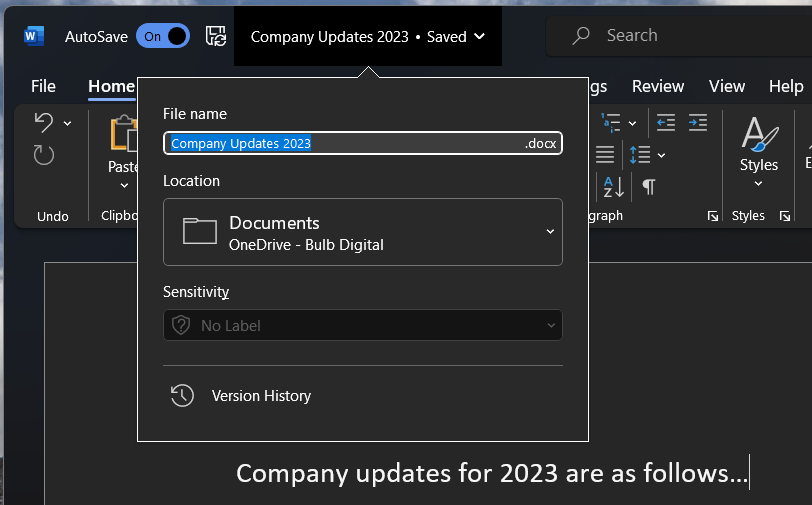
It’s also worth the time to dig into the app settings to set how often syncing happens, manage your existing syncs, and set notifications. This not only gets you the most out of the application features but also helps reinforce your understanding of what syncing is really doing between your devices and the cloud.
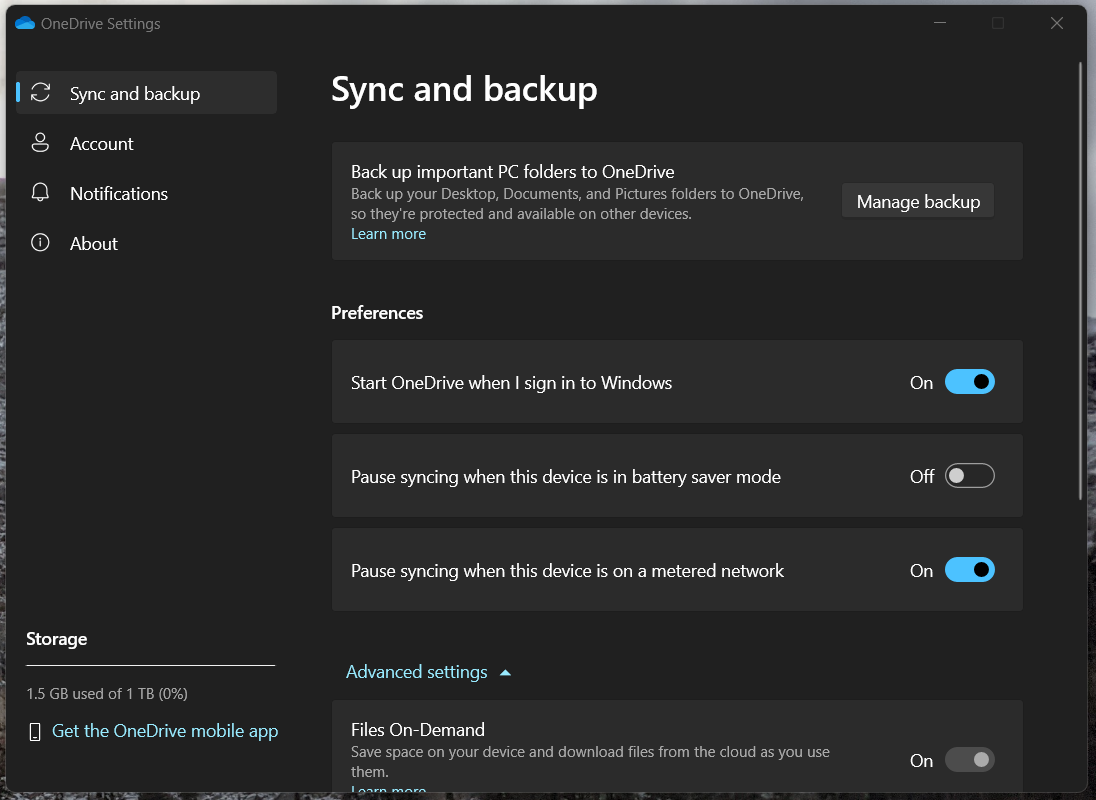
An Improved Way or Collaborating
Once you gain clarity about what syncing is and how it functions automatically behind the scenes the extra benefits come into focus. The beauty of syncing your files to the cloud is that it offers a way to continue working anytime, all while preserving your preferred ways to access your content. The setup is the simple part and adapting to this style of working will pay dividends when it matters most!
Helpful Links
Choose which OneDrive folders to sync to your computer
What do the OneDrive icons mean
Fix OneDrive Sync Problems







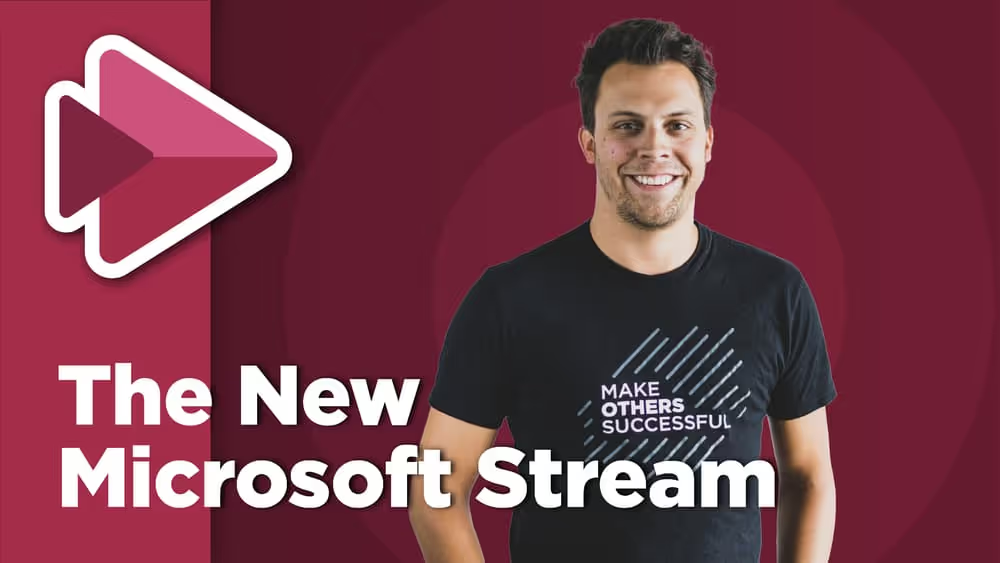
.avif)





